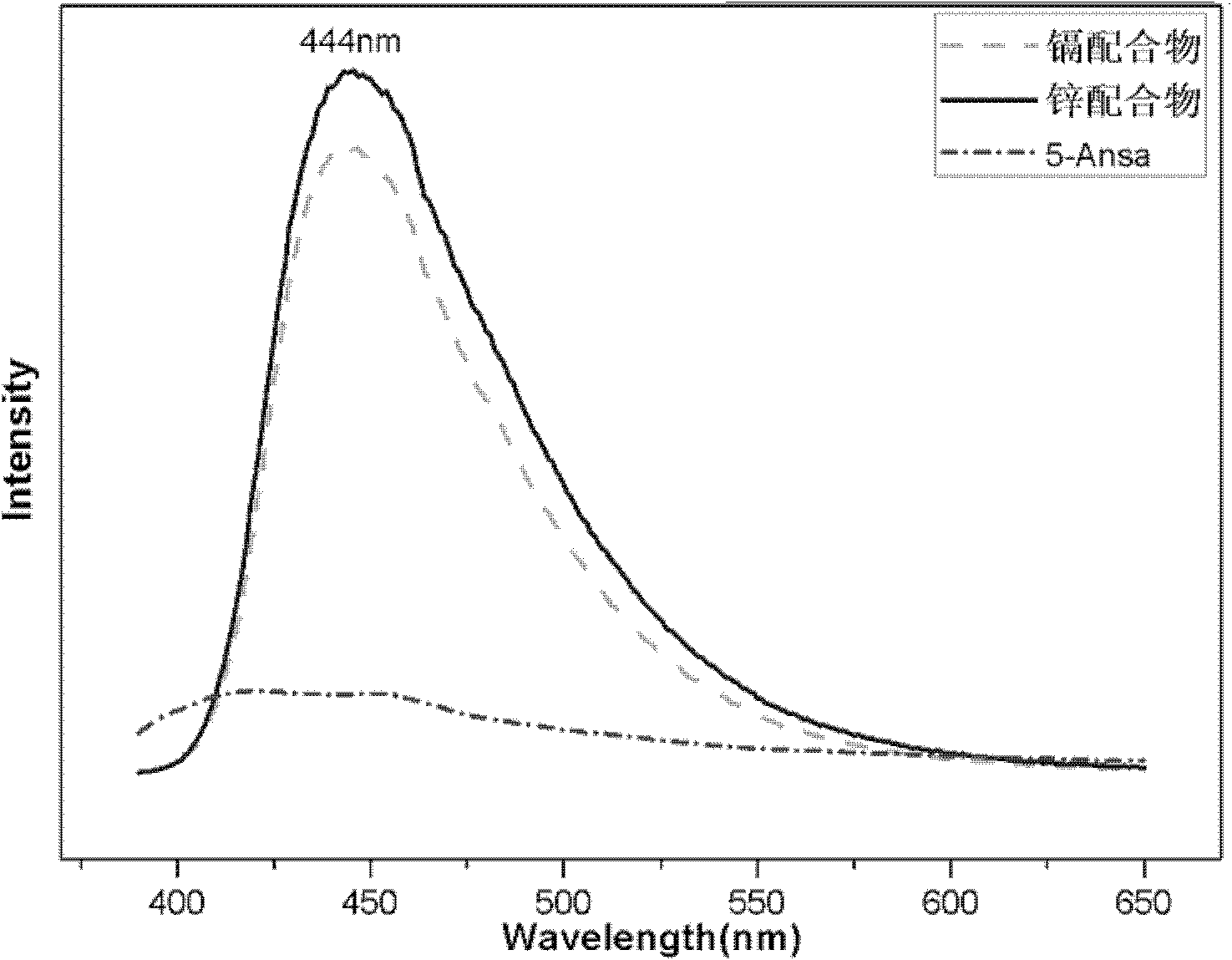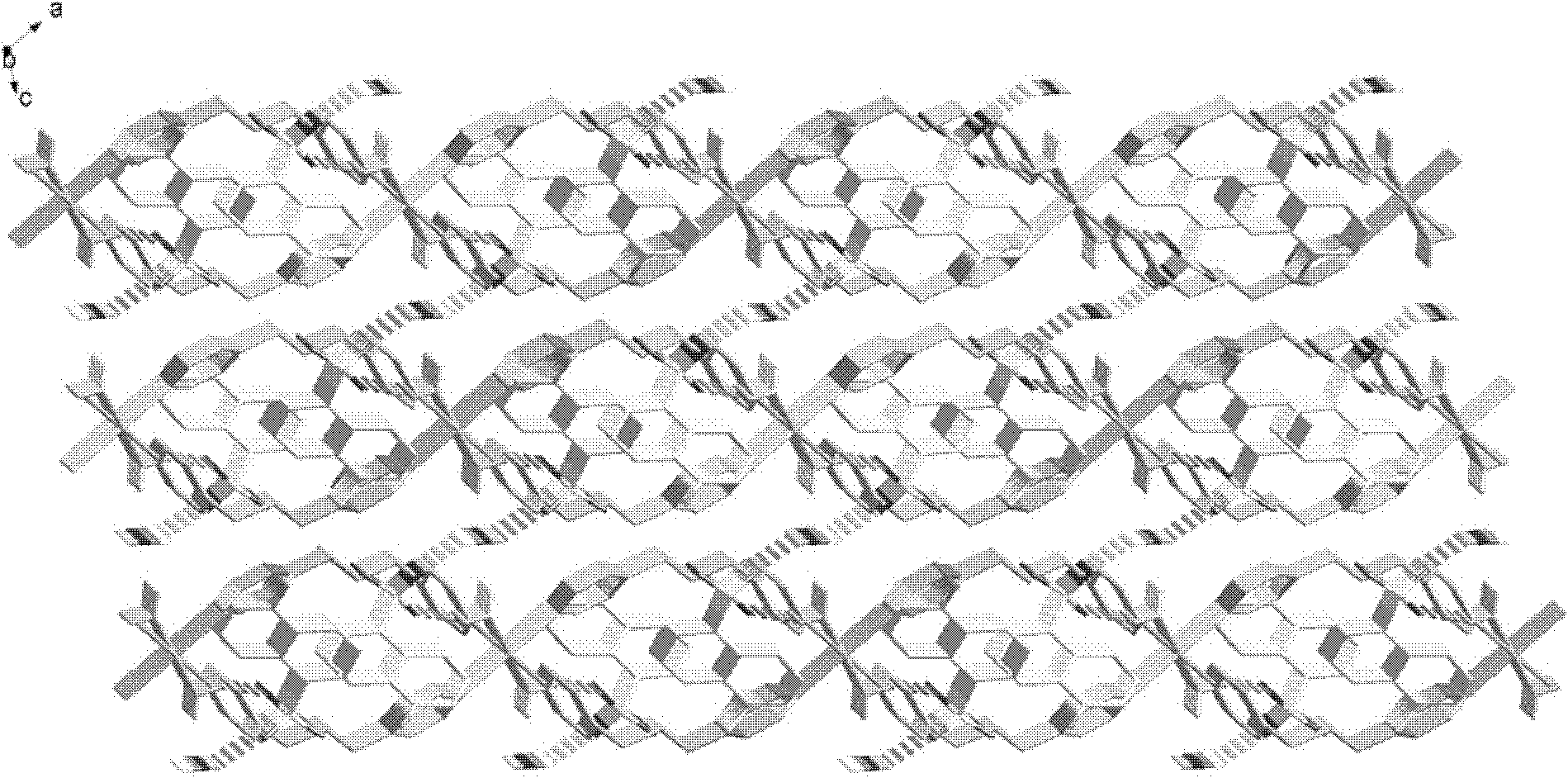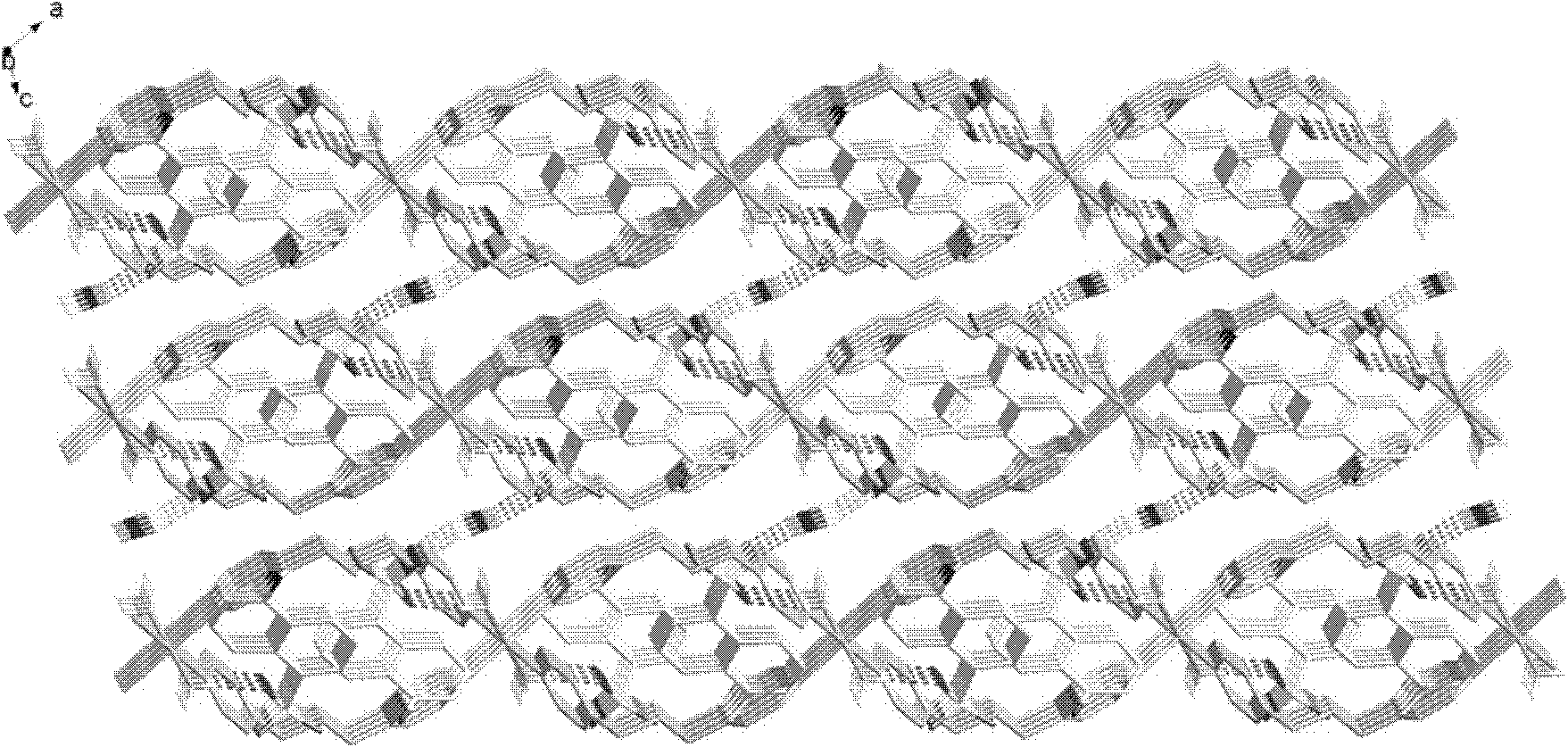Fluorescent materials containing 5-amino-1-naphthalene-sulfonic acid and synthesis method thereof
A technology of fluorescent materials and sulfonic acids, applied in luminescent materials, chemical instruments and methods, zinc organic compounds, etc., can solve the problems of affecting the luminescent properties of fluorescent materials, low transition energy transfer efficiency, weakened fluorescence intensity, etc., to avoid energy loss. , luminous intensity enhancement, reducing the effect of quenching
- Summary
- Abstract
- Description
- Claims
- Application Information
AI Technical Summary
Problems solved by technology
Method used
Image
Examples
Embodiment 1
[0015] Synthesis of cadmium complex: Add 3ml of methanol to 5-Ansa (0.045g, 0.20mmol), then add 0.5M NaOH aqueous solution (0.45ml, 0.225mmol), stir for 0.5 hours to fully dissolve, and obtain a reddish-brown transparent solution. Cd(NO 3 ) 2 4H 2 O (0.031g, 0.10mmol) and 4,4'-bpp (0.039g, 0.20mmol) were dissolved in a mixed solvent of 4ml methanol and 2ml water, and the resulting colorless transparent solution was stirred at room temperature for 4 hours, and then added The above-mentioned reddish-brown transparent solution will produce a small amount of gray-purple precipitate. Continue to stir the solution at room temperature for 40 minutes, filter, and slowly volatilize in the air for 20 days to obtain 0.031 g of light brown transparent block crystals (yield 30%, Based on 5-Ansa). Elemental analysis (CdC 46 h 52 N 6 o 10 S 2 ) (%): Theoretical value: C, 53.88; H, 5.11; N, 8.20. Experimental value: C, 54.37; H, 4.97; N, 8.26. -1 ): 3452(m), 3363(s), 3252(m), 3045(w)...
Embodiment 2
[0017] Synthesis of zinc complex: Add 3ml of methanol to 5-Ansa (0.045g, 0.20mmol), then add 0.5M NaOH aqueous solution (0.45ml, 0.225mmol), stir for 0.5 hours to fully dissolve, and obtain a reddish-brown transparent solution. Zn(NO 3 ) 2·6H 2 O (0.030g, 0.10mmol) and 4,4'-bpp (0.039g, 0.20mmol) were dissolved in a mixed solvent of 4ml methanol and 2ml water, and the resulting colorless transparent solution was stirred at room temperature for 4 hours, and then added The above-mentioned reddish-brown transparent solution will produce a small amount of grayish-purple precipitate. Continue to stir the solution at room temperature for 40 minutes, filter, and slowly volatilize in the air for 20 days to obtain 0.029 g of reddish-brown transparent massive crystals (yield 30%, Based on 5-Ansa). Elemental analysis (ZnC 46 h 50 N 6 o 9 S 2 ) (%): Theoretical value: C, 57.53; H, 5.25; N, 8.75. Experimental value: C, 57.24; H, 5.23.; N, 8.79. -1 ): 3453(m), 3364(s), 3249(m), 304...
PUM
 Login to View More
Login to View More Abstract
Description
Claims
Application Information
 Login to View More
Login to View More - R&D
- Intellectual Property
- Life Sciences
- Materials
- Tech Scout
- Unparalleled Data Quality
- Higher Quality Content
- 60% Fewer Hallucinations
Browse by: Latest US Patents, China's latest patents, Technical Efficacy Thesaurus, Application Domain, Technology Topic, Popular Technical Reports.
© 2025 PatSnap. All rights reserved.Legal|Privacy policy|Modern Slavery Act Transparency Statement|Sitemap|About US| Contact US: help@patsnap.com



